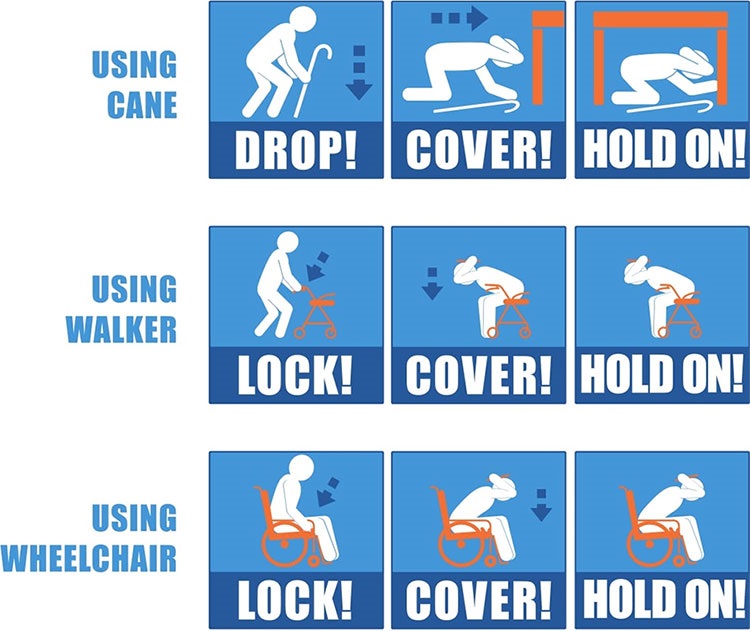Drop, Cover, Hold On
The most common causes of injury during earthquakes are being struck unsecured objects and trying to move or run while the ground is shaking. To protect yourself, the best thing to do is to Drop, Cover, then Hold On!

Immediately DROP where you are, onto your hands and knees. COVER your head with one arm and hand. If a sturdy table or desk is nearby, move underneath it for shelter. HOLD ON until shaking stops. If under shelter, hold onto it with one hand while covering your head with the other hand. If not under shelter, cover your head with both hands.
Doorways are NOT a safe place to take cover during an earthquake. This is a widely believed myth, but door frames do not offer any real protection during earthquakes. Drop, Cover, and Hold On instead.
Alternatives to Drop, Cover, Hold On
In Bed: Stay where you are and protect your head with your arms and pillow.
Using mobility aids: If possible, move away from windows, heavy furniture, or other items that could fall or break and injure you. Lock wheelchair or walker wheels, and cover your head with your arms. If you cannot cover your head, try to crouch over and protect your stomach.

Driving: Stay in your vehicle. If it is safe to do so, pull over to the side of the road, stop, and engage the emergency brake. Try to avoid overpasses, bridges, telephone wires and poles, or anything that could fall on your vehicle. If a power line falls on your vehicle, stay put and dial 9-1-1. Wait for a trained responder to remove the lines from your vehicle.
Outside: Drop, Cover, and Hold On as best as you can. Try to avoid anything that could fall on you and cause injury.
In a theater or stadium: Drop, Cover, and Hold On in between rows or seats. If you cannot drop between the rows, stay in your seat and cover your head and neck with your arms.


8.3.3